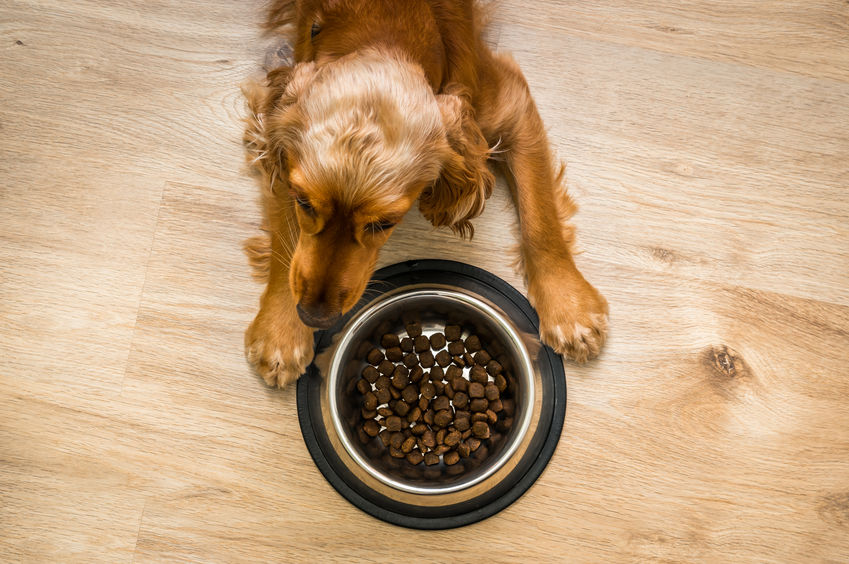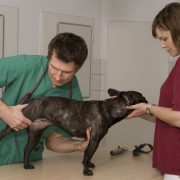Comparison between a flash glucose monitoring system and a portable blood glucose meter for monitoring dogs with diabetes mellitus
Comparison between a flash glucose monitoring system and a portable blood glucose meter for monitoring dogs with diabetes mellitus

Open Access
In our edition of: Feb 2021
In our categories of: small animals
our summary:
Del Baldo, F. et al (2020) Comparison between a flash glucose monitoring system and a portable blood glucose meter for monitoring dogs with diabetes mellitus Journal of Veterinary Internal Medicine, 34 (6) pp 2296-2305.
The aim of this prospective observational study was to compare glucose curve (GC) readings taken from insulin-treated dogs with diabetes using two different monitoring systems: The Freestyle Libre Flash Glucose Monitoring System (FGMS) and the Portable Blood Glucose Meter (PBGM). Investigators also analysed the data collected to compare the accuracy of the two systems in recording the GC nadir, and to characterise GCs obtained both in different environments (hospital vs home) and at different times (nocturnal vs diurnal).
The study was carried out at a single university veterinary hospital between May 2015 and March 2018. Twenty dogs with diabetes mellitus (DM), who had been treated with insulin for at least four weeks prior to recruitment, were enrolled in the study. All dogs were fitted with a FGMS and interstitial glucose curves (IGCs) were acquired for each dog during the 14-day recording period. On study days 1, 7 and 14, paired in-hospital GCs for each dog were acquired using the FGMS and PBGM. The remaining four IGCs were obtained at home by the owner using the FGMS.
Summary glucose reports (the Ambulatory Glucose Profile (AGP)) generated by the FGMS included a daily log showing interstitial glucose fluctuations between 20 and 350 mg/dL during a 24-hour period, this was used to provide an estimation of glucose nadirs and the number of low glucose episodes. Hypothetical insulin dose recommendations were then made for each GC, and comparisons were made for the in-hospital GCs, from the FGMS and PBGM, for the consecutive day IGCs acquired at home and for the consecutive day home vs hospital IGCs acquired with the FGMS.
Results showed that when comparing GCs acquired in hospital, using both the FGMS and the PBCM, the insulin dosing recommendation would have been the same in 33/43 cases and 34/43 cases considering the glycaemic nadir. For IGCs performed at home on two consecutive days using the FGMS, the insulin dosing recommendation would have only been the same in 5/14 cases and 9/14 cases when considering the glycaemic nadir. For IGCs performed on two consecutive days at home and hospital using the FGMS, the insulin dosing recommendation would have been the same in 17/25 cases and 16/25 for glycaemic nadir.
When assessing nadir, the AGP was used as a ‘gold standard’. Using the AGP, glucose nadirs were identified in 34/43 (79%) IGCs. When considering the 34 IGCs in which a glucose nadir was identified, concordant glucose nadirs were detected in 28/34 (82%) IGCs generated by the individual FGMS scans and in 14/34 (41%) BGCs obtained by PBGM.
Limitations of the study include the small number of dogs enrolled and that, for this study, FGMS was considered the gold standard. Additionally, for 12/20 dogs, the sensor in the FGMS did not last for the 14-day period, which reduced the amount of data available for analysis and meant that the accuracy of the FGMSs were not evaluated for the entire study period.
This study shows that the FGMS could be a valuable tool in detecting glucose nadirs in dogs with diabetes mellitus and that the real-time data collected and the reports generated by the AGP software allow for retrospective analysis of day-to-day variations in glycaemic control. The study highlights that there are limitations in both forms of monitoring.
If you found this article interesting you may also be interested in
Deiting, V. and Mische, R. (2021) Use of the “FreeStyle Libre” glucose monitoring system in diabetic cats. Research in Veterinary Science, 135, pp. 253-259. https://doi.org/10.1016/j.rvsc.2020.09.015.
Image copyright attribute: andriano
Join the discussion
We encourage discussion on all material highlighted in each edition of inFOCUS. Use the button below to join the conversation on Twitter and include your comment in the feed for this issue.





Leave a Reply
Want to join the discussion?Feel free to contribute!